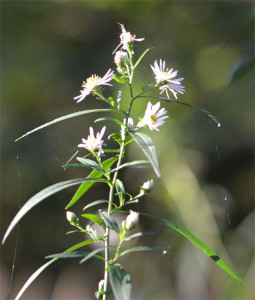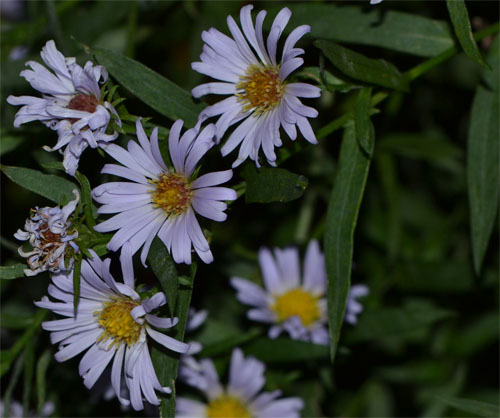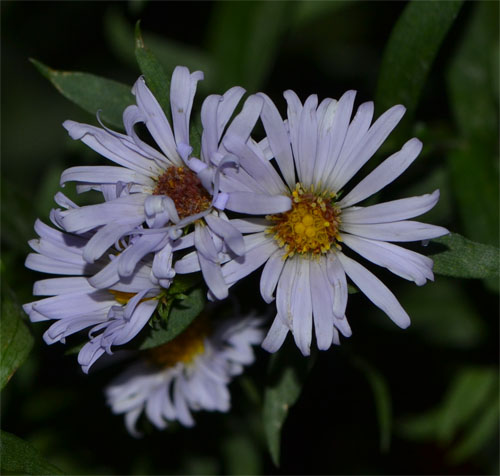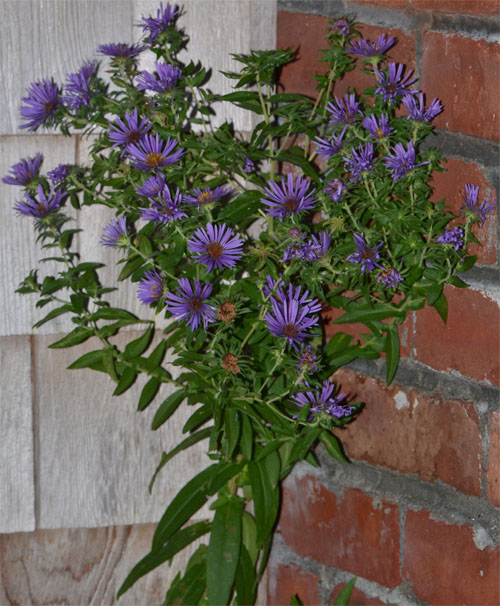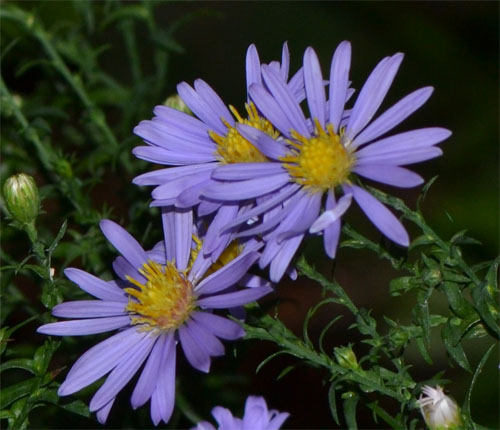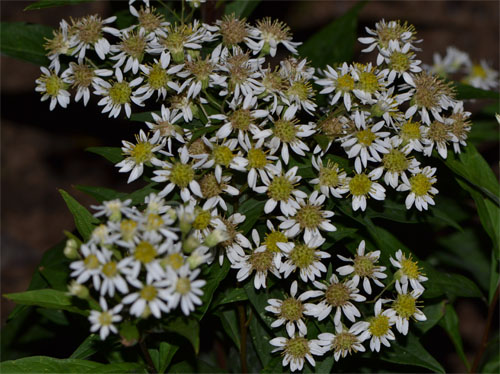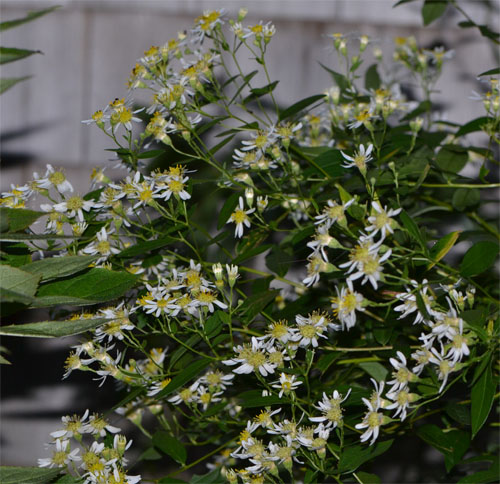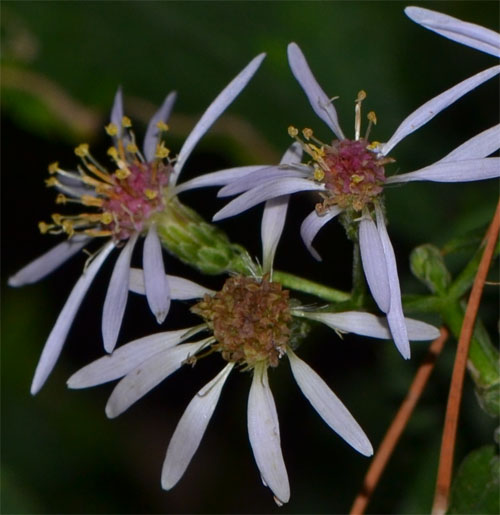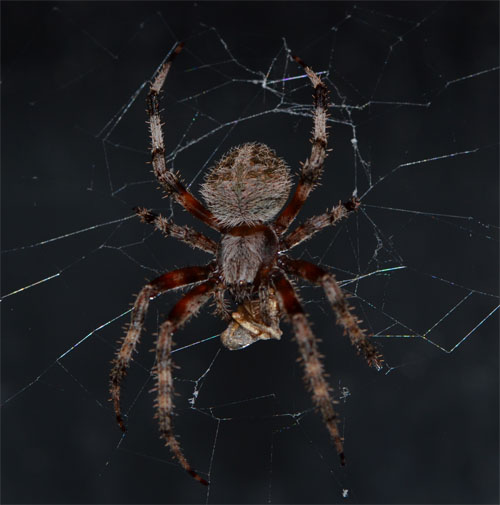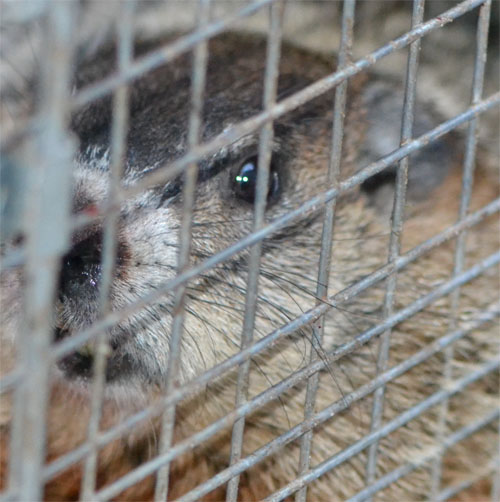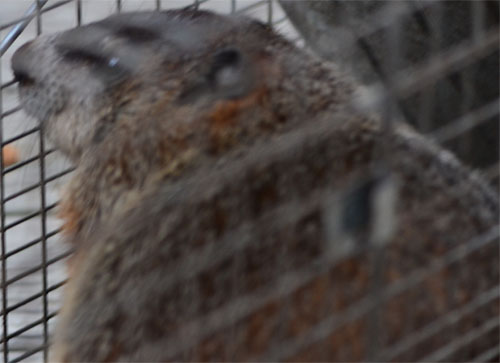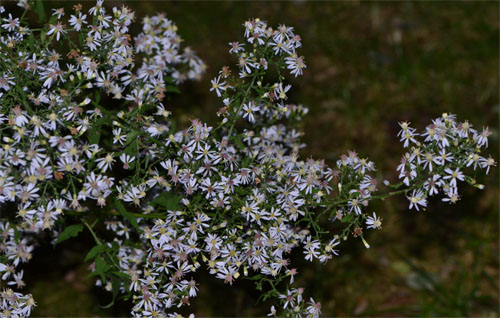
Numerous flowers look like cotton candy from afar. Or maybe I just need a new prescription.
This amazingly prolific aster is everywhere in my yard, and that is not a bad thing as it was also one of the favorite feed plants of a resident woodchuck. The young plants were simply decimated down to the soil, while the taller plants are now mostly devoid of their big leaves. Many stems were broken as the animal tried to reach the leaves at higher elevations. The plant ranges anywhere from half a foot to 4 feet in my garden, depending on light conditions. The plant seems to thrive in pretty much any spot, though, and the seedlings of spring are in some cases producing flowers already. In a few weeks the flowers will give way to seed that will be carried by the wind. I should have many more common blue wood asters come next spring (hint: let me know and I will reserve plants for you). This plant has many branches with a multitude of pale blue flowers that are extremely showy.
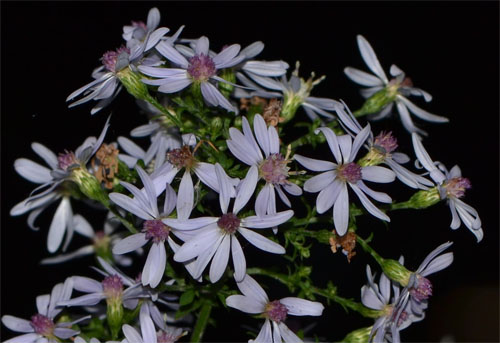
September 23 2013
